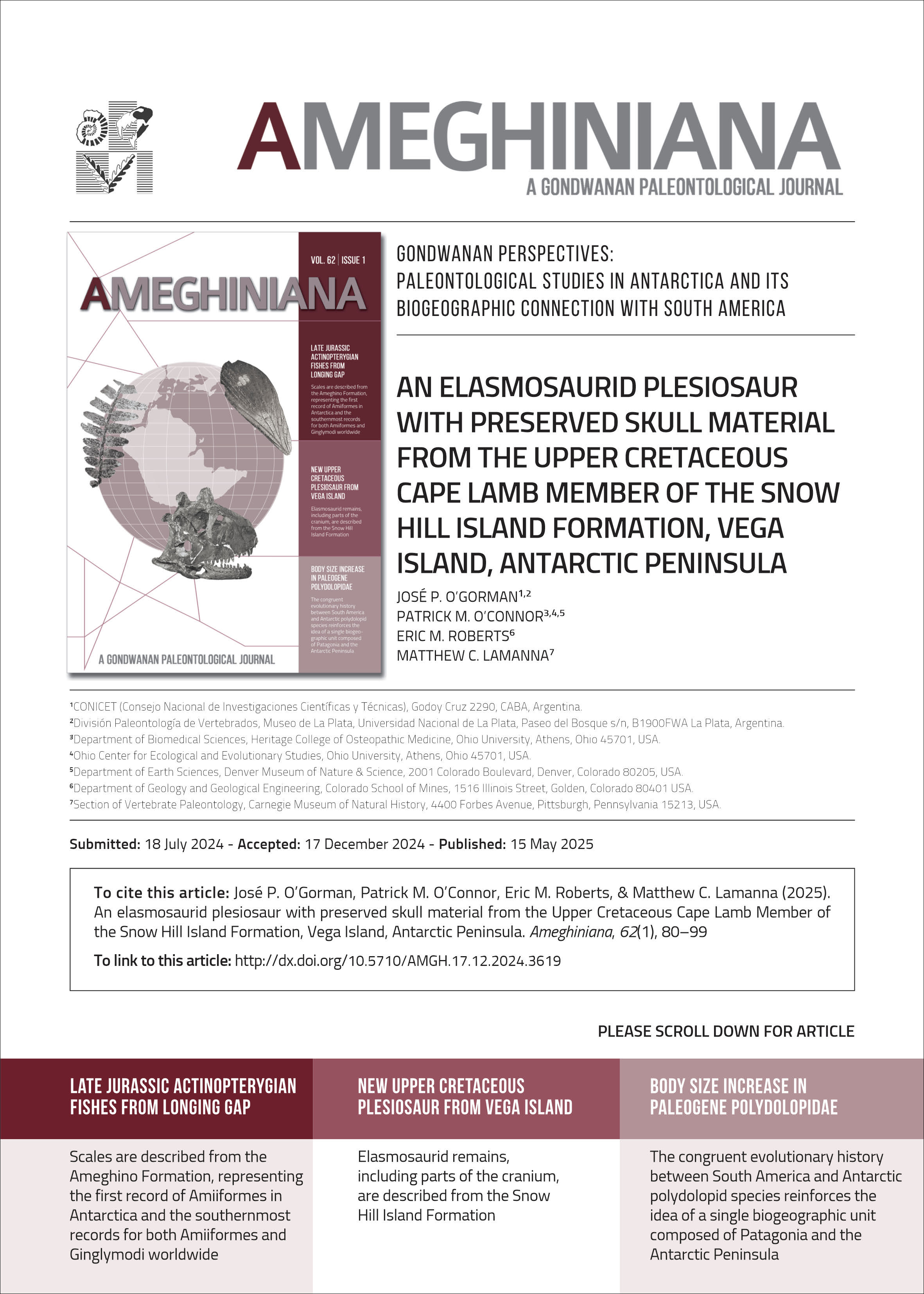AN ELASMOSAURID PLESIOSAUR WITH PRESERVED SKULL MATERIAL FROM THE UPPER CRETACEOUS CAPE LAMB MEMBER OF THE SNOW HILL ISLAND FORMATION, VEGA ISLAND, ANTARCTIC PENINSULA
DOI:
https://doi.org/10.5710/AMGH.17.12.2024.3619Keywords:
Elasmosauridae, Weddellonectia, Aristonectinae, Formación Snow Hill Island., Vegasaurus, Vega IslandAbstract
Dozens of plesiosaur specimens have been recovered from the Upper Cretaceous of the Antarctic Peninsula, yet individuals that include skull material are extraordinarily rare. Here we report a new elasmosaurid partial skeleton from Cape Lamb of Vega Island (James Ross Island Group) that preserves significant parts of the cranium, mandible, and dentition, the semi-articulated anterior cervical series, several additional cervical vertebrae and ribs, caudal vertebrae, and four phalanges. Pertaining to an osteologically immature individual, the specimen is the second plesiosaur preserving skull bones to be reported from the uppermost (lower Maastrichtian) portion of the lower unit of the Cape Lamb Member of the Snow Hill Island Formation, and only the fourth to be discovered from the Cretaceous of Antarctica as a whole. Although most skeletal elements are represented only by natural molds, detailed observations and digital visualizations yield a considerable amount of anatomical information. Phylogenetic analysis positions the specimen within the largely Gondwanan elasmosaurid clade Weddellonectia, as the sister taxon of the highly derived, large-headed, possibly filter-feeding Aristonectinae. Ontogenetically independent differences in cervical vertebral morphology with Vegasaurus molyi—the only elasmosaurid species currently recognized from the Cape Lamb Member—indicate that the new specimen represents a second taxon of these long-necked marine reptiles within this stratigraphic unit.

Downloads
Published
Versions
- 2025-06-19 (2)
- 2025-05-15 (1)
Issue
Section
License
Authors publishing in Ameghiniana have the option of making their article freely available online. Authors opting for the Open Access must pay a fee of $300 (US dollars) to cover article-processing costs and to ensure the article is made open access. Please contact the Production Team after the acceptance of your manuscript if you are interested in making your article Open Access. This option implies by default a license Creative Commons Attribution Non-Commercial-NoDerivs License (CC BY NC ND). If your funding institution requires a different licensing option please communicate this to the Production Team after the acceptance of your manusctipt.










